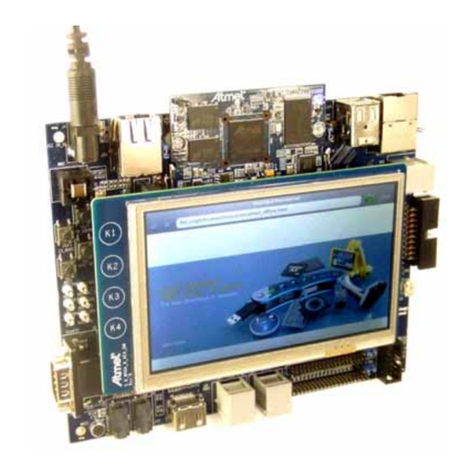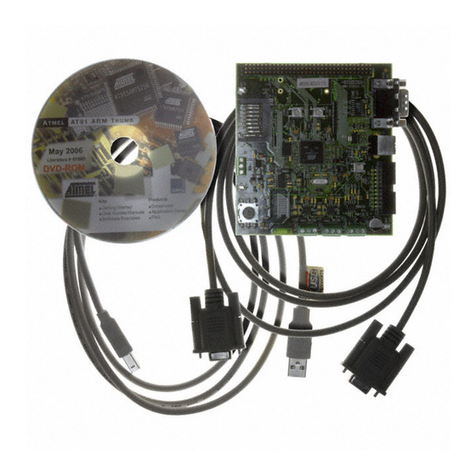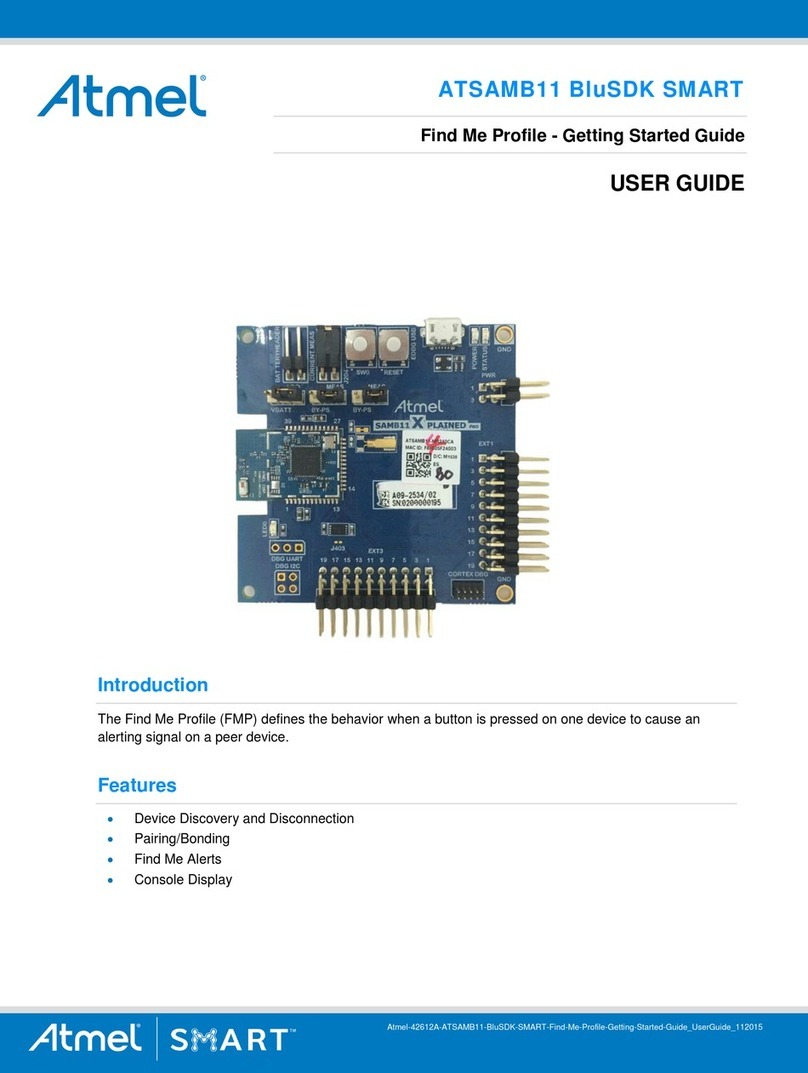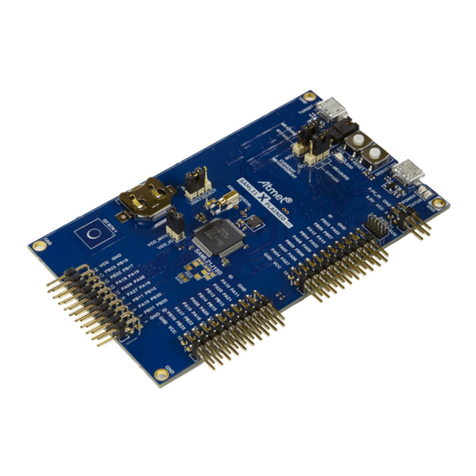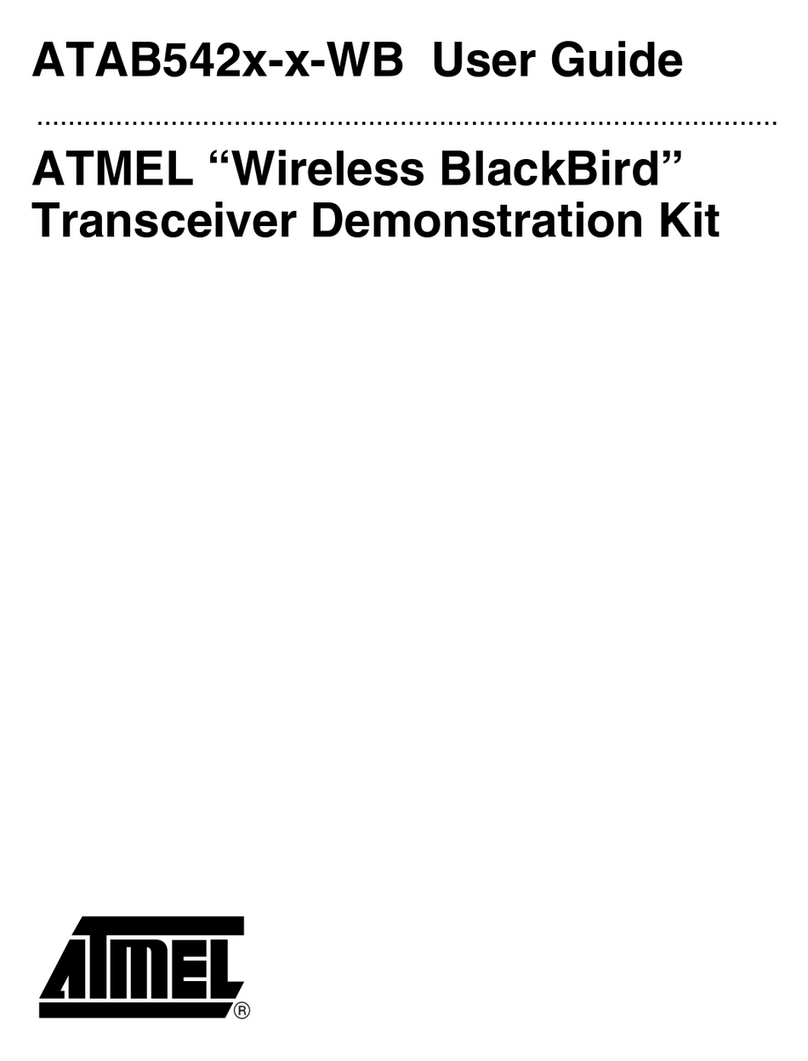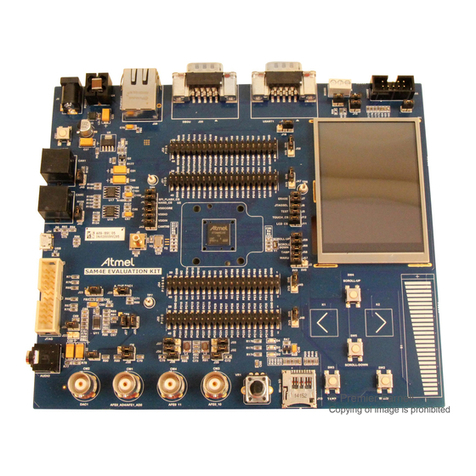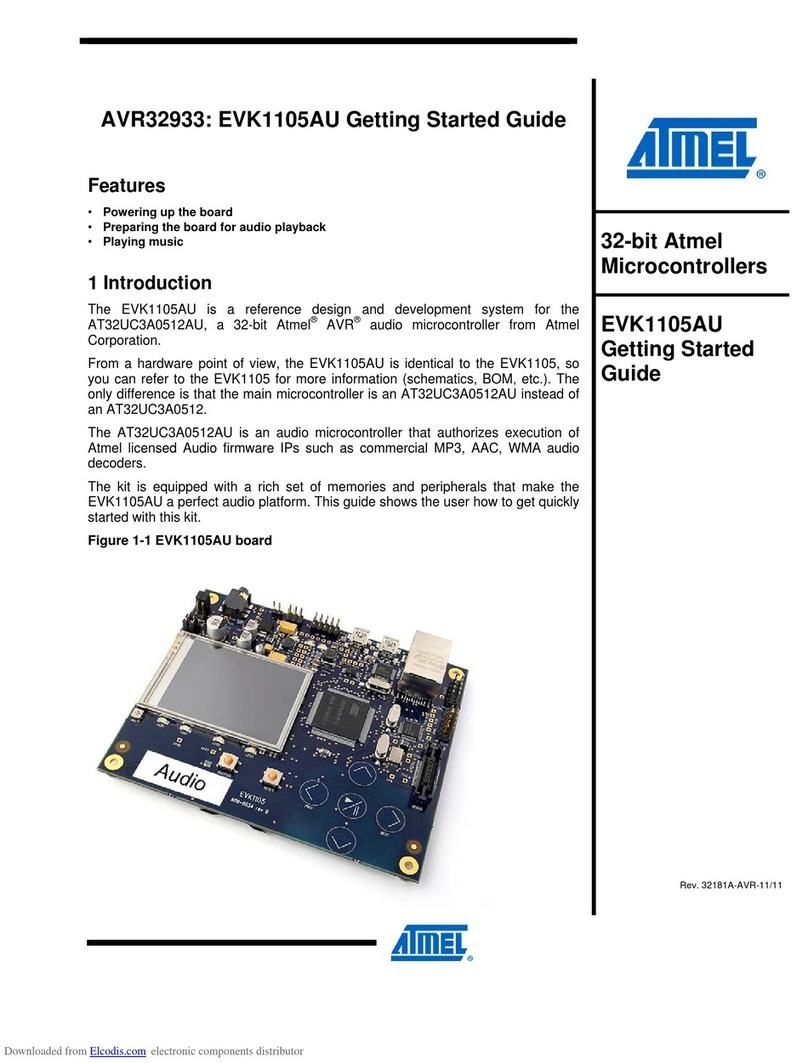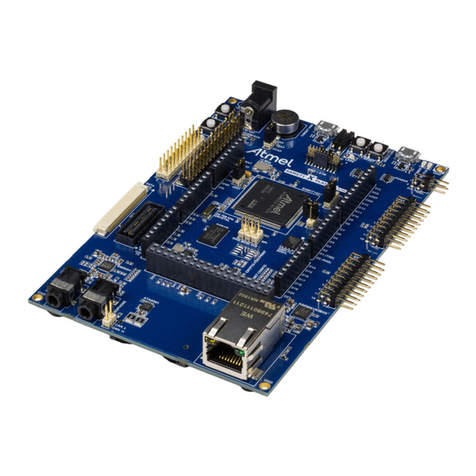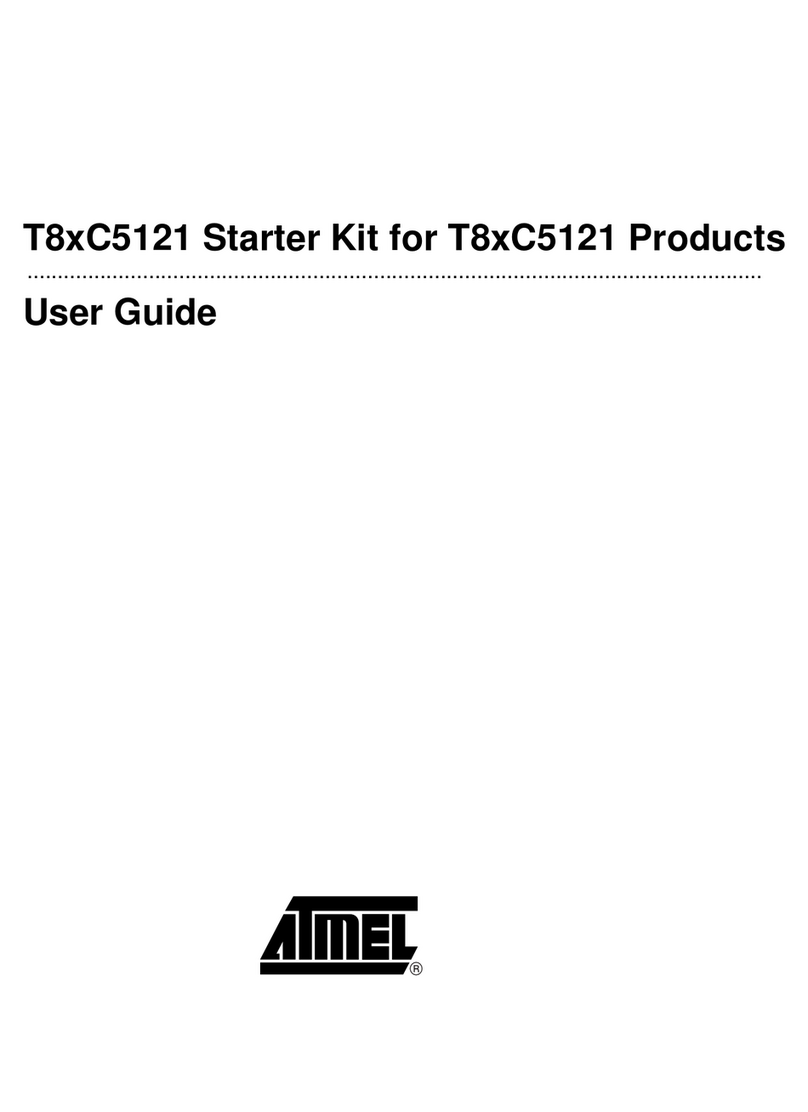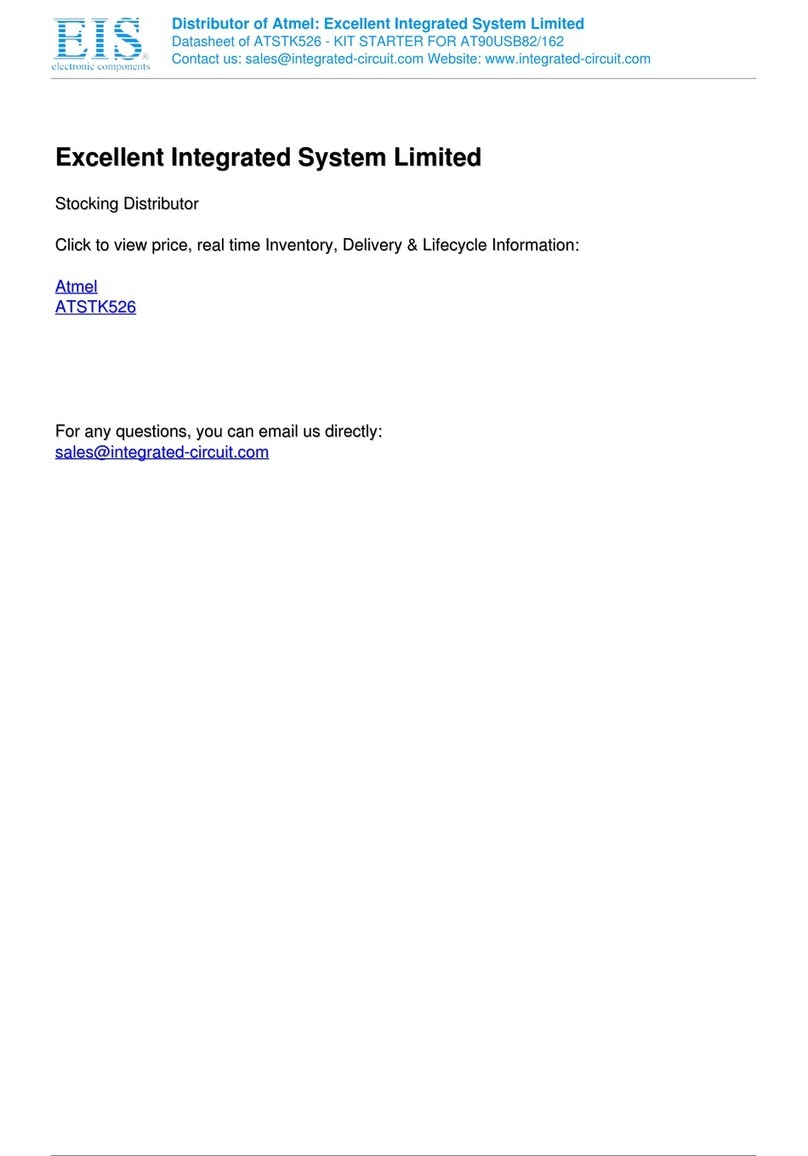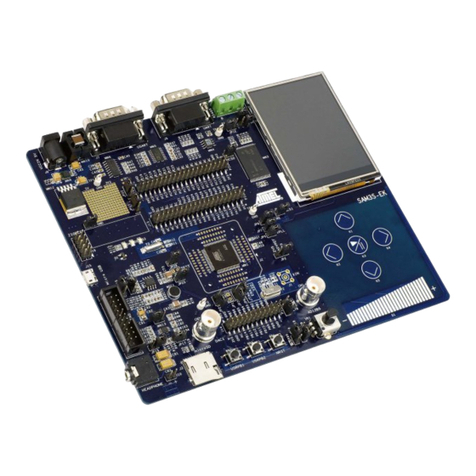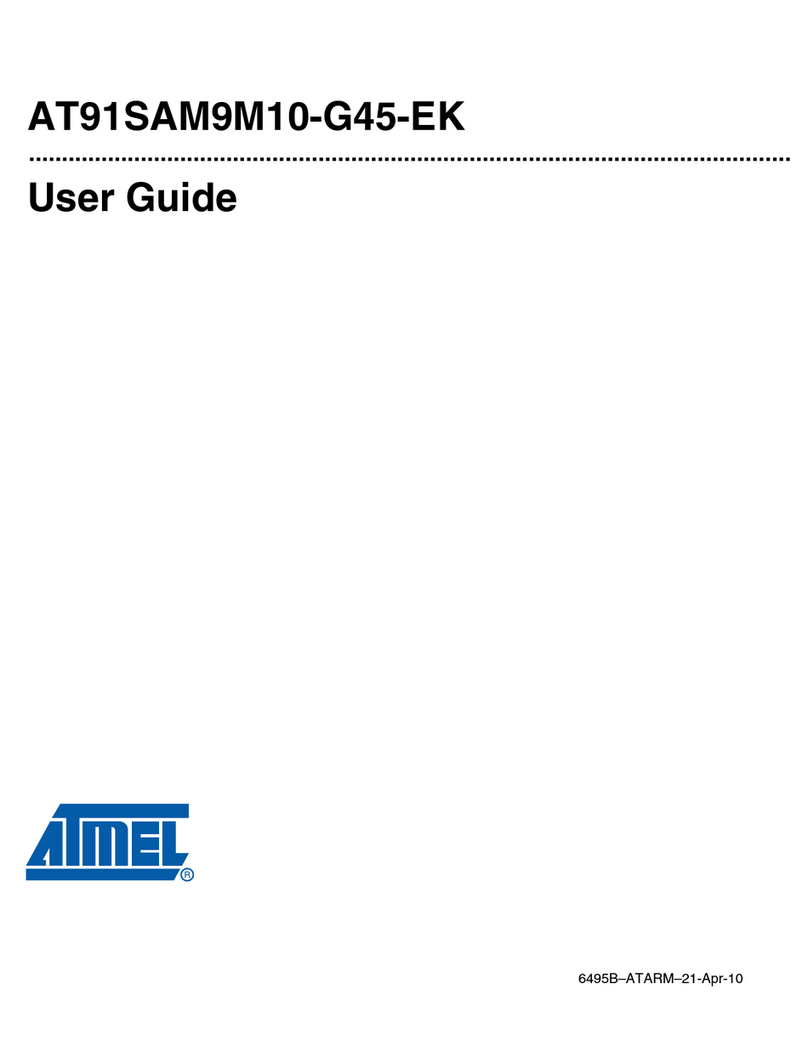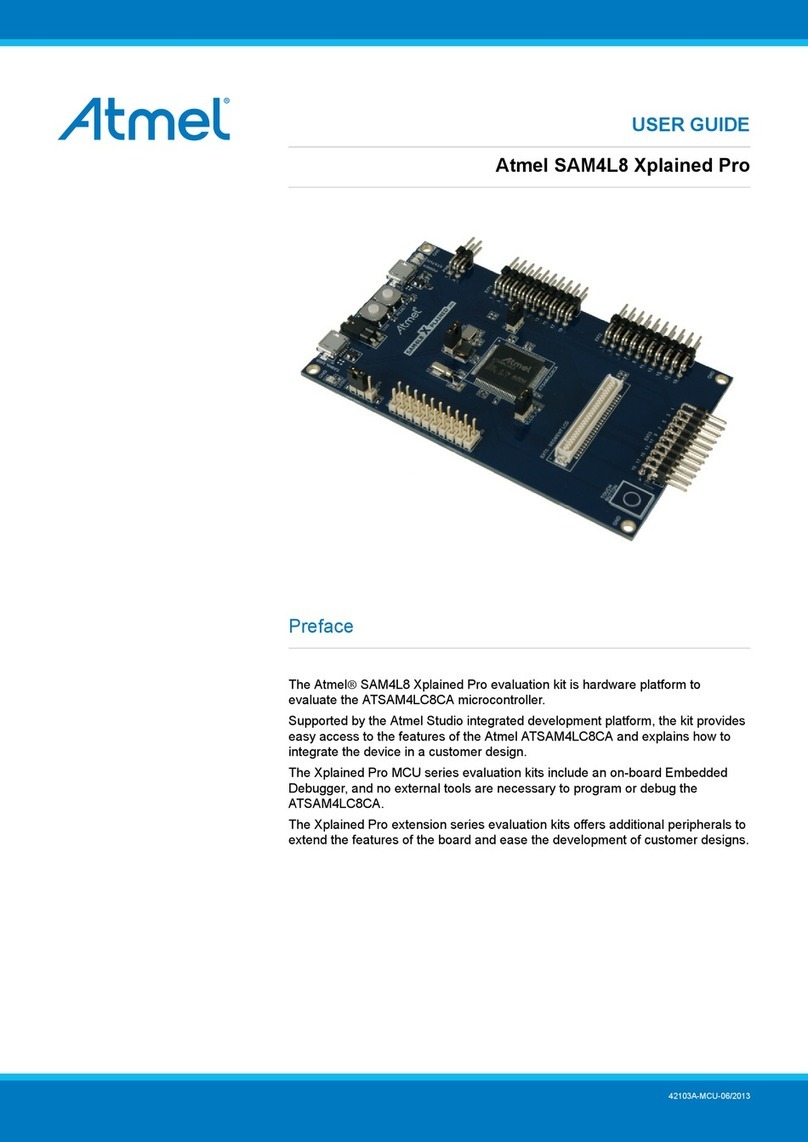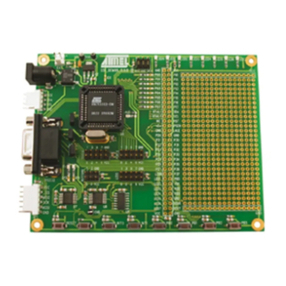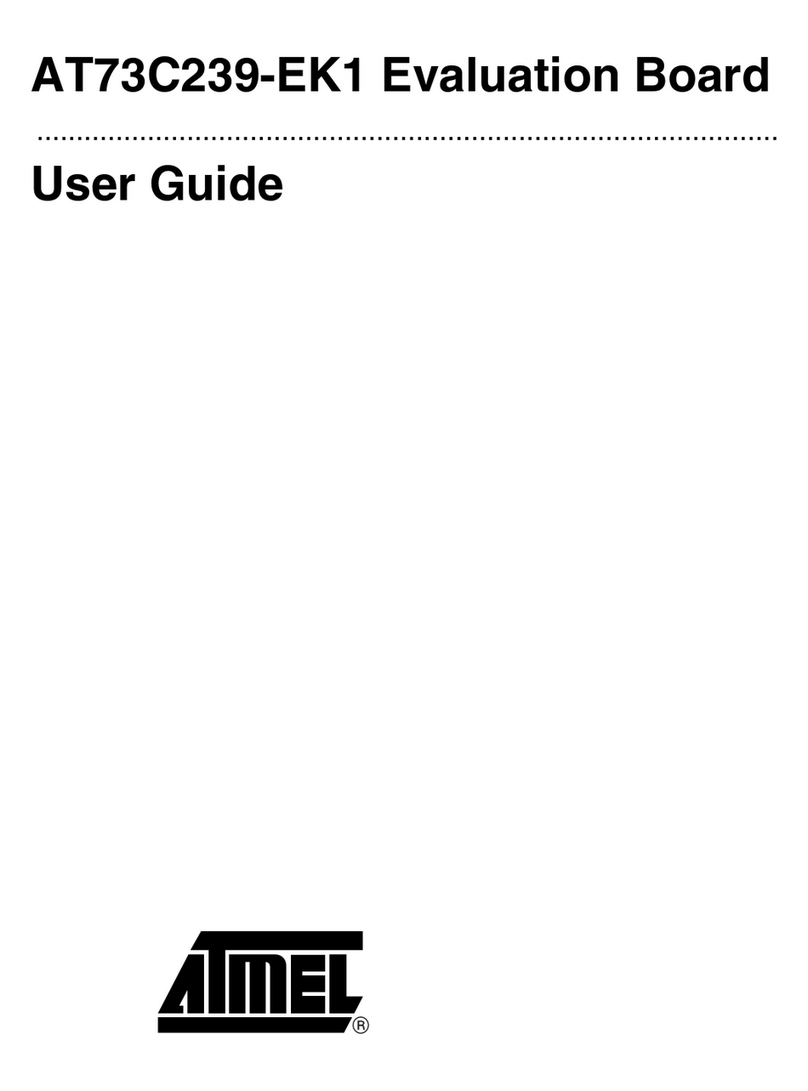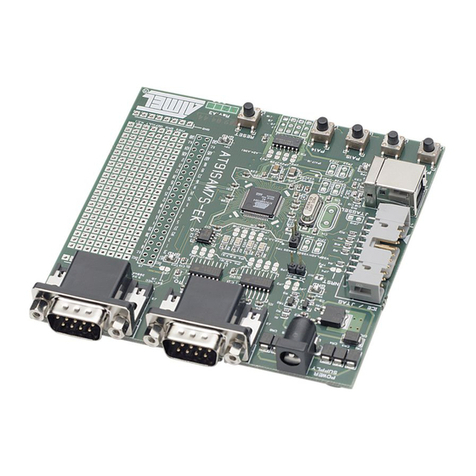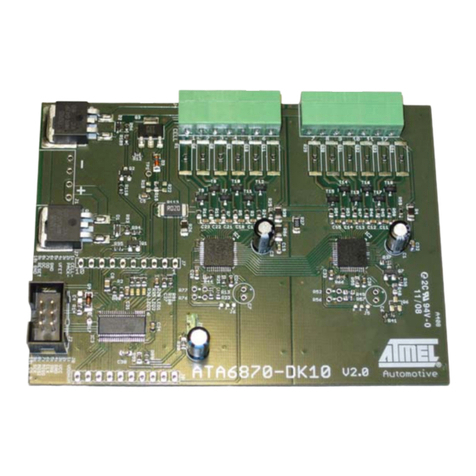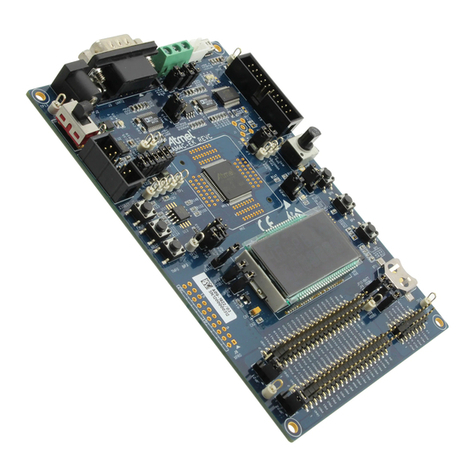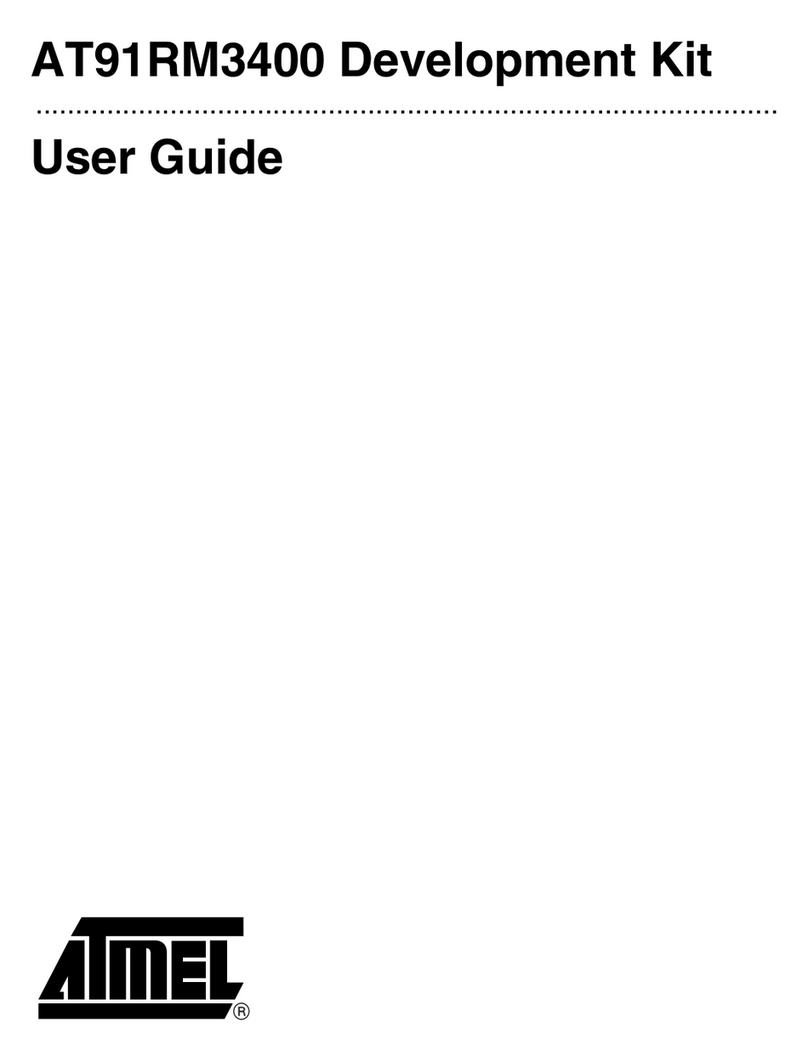
AVR910
6
FLASH PROGRAM MEMORY ACCESS
When the part has been identified, it is time to start access-
ing the Flash memory. A Chip Erase should be performed
before programming the Flash memory. Depending on the
target device the Flash is programmed using “Byte”or
“Page”mode.
For devices with “Byte Programming mode”each Flash
location is dressed and programmed individually. In Page
programming mode, a temporary Page buffer is first filled,
and then programmed in one single write cycle. This mode
reduces the total Flash programming time. A device will
only have one of these modes available. A device with
“Byte Programming mode”do not have the “Page”pro-
gramming option. A device with “Page”programming mode
of the Flash will, however, use byte programming for the
EEPROM memory.
Regardless if the device uses “Byte Programming mode”or
“Page Programming mode”the Flash will be read one byte
at the time using the “Read Flash Program Memory”com-
mand. The command sends a memory address ($aa bb) to
select a 16-bit word, and selects low or high byte with the H
bit in the command byte (0 is low, 1 is high byte). The byte
stored at this address is then returned from the target AVR
microcontroller in byte 4.
Usually, each 16-bit word in Flash contains one AVR
instruction. Assuming the instruction stored at address
$104 is “add r16,r17”, the op-code for this instruction would
be stored as $0F01. Reading address $104 serially, the
expected result returned in byte 4 will be $0F from the high
byte, and $01 from the low byte. The data on the MISO and
MOSI lines will look like shown in Table 7.
Writing to the Flash memory will, however, differ depending
on the available programming mode.
For devices using “Byte Programming mode”bytes are
written with the “Write Program Flash Memory”command.
This command sends a memory address ($aa bb) to select
a 16-bit word, and selects low or high byte with the Hbit (0
is low, 1 is high byte). The byte to be stored is then sent to
the target AVR microcontroller in byte 4.
For devices using “Page Programming mode”the Flash is
programmed in two steps. First a temporary Page buffer is
filled using the “Load Program Memory Page”command.
Each byte in this buffer can be directly accessed. Once the
entire Page buffer is filled, it can be written to the Flash
Memory using the “Write Program Memory Page”
command.
In some devices, there is no method to detect when the
Flash write cycle has ended. For this reason, the program-
mer presented in this application note waits N ms before
attempting to send another command to the interface (the
delay N will depend on target device, and can be found in
the Programming section of the datasheet). For some
devices it is possible to use polling. When a byte is being
programmed into the Flash or EEPROM, reading the
addressed location being programmed will give a value M
(often $FF). At the time the device is ready for a new byte,
the programmed value will read correctly. This can be used
to determine when the next byte can be written. When pro-
gramming the value M polling will not work, and a delay N
should be used before writing the next value. Polled mode
will decrease the time required to program a device.
Table 7. Example, Reading “add r16,r17”as $0F01 from Flash Memory location $104
Action MOSI, Sent to Target AVR MISO, Returned from Target AVR
Read $01 at address $104, low byte $20 01 04 xx $zz 20 01 01
Read $0F at address $104, high byte $28 01 04 yy $xx 28 01 0F
Table 8. Example, Writing “add r17,r18”as $0F12 to Flash Memory location $10C (Byte Programming Mode)
Action MOSI, Sent to Target AVR MISO, Returned from Target AVR
Write $12 at address $10C, low byte $60 01 0C 12 $zz 60 01 0C
Wait N ms
Write $0F at address $10C, high byte $68 01 0C 0F $xx 68 01 0C
Wait N ms
